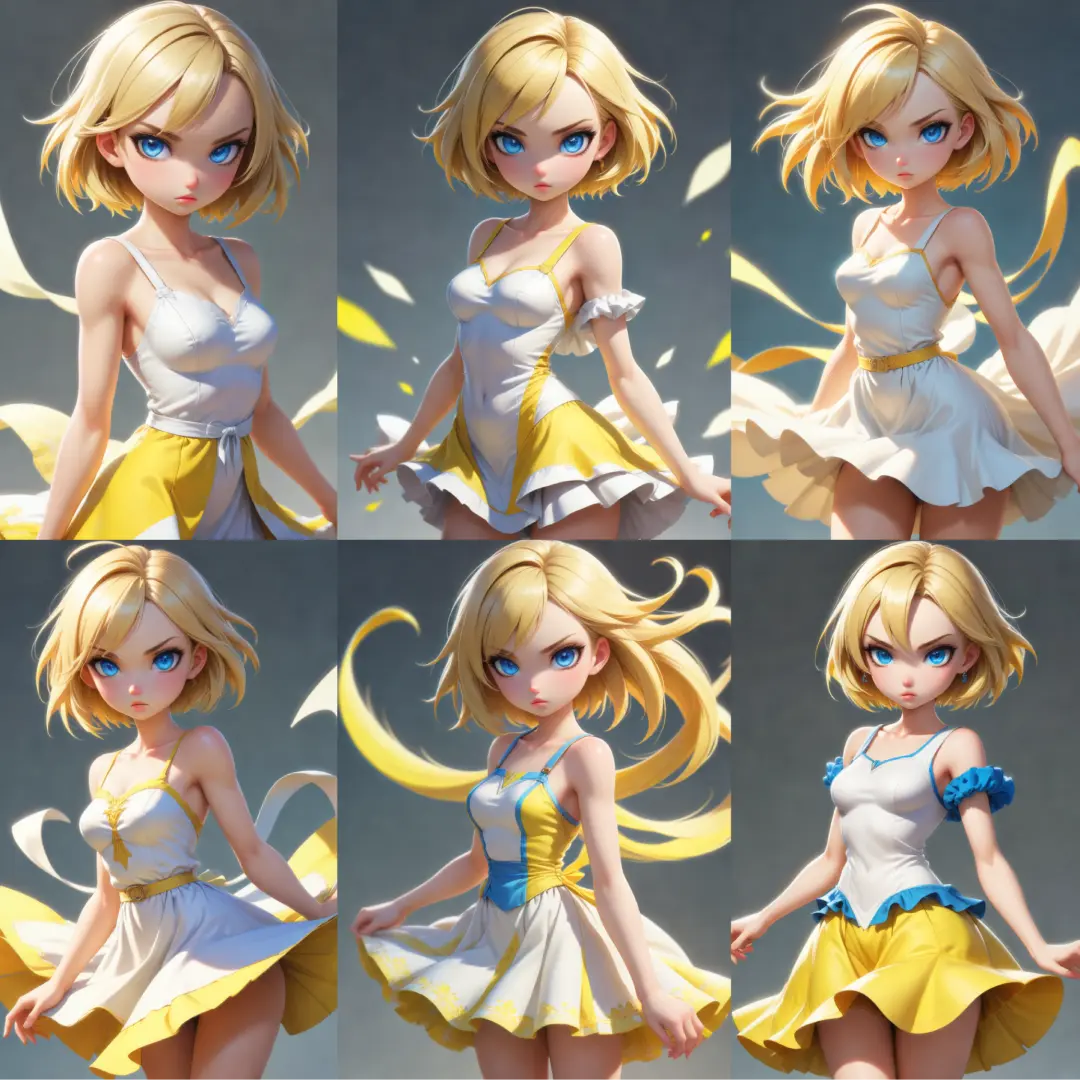ComfyUI Node: Audio Gen Video 🎥AniPortrait
AniPortrait_Audio2Video
CategoryAniPortrait 🎥Video
FrankChieng (Account age: 725days) Extension
ComfyUI_Aniportrait Latest Updated
2024-09-13 Github Stars
0.05K
How to Install ComfyUI_Aniportrait
Install this extension via the ComfyUI Manager by searching for ComfyUI_Aniportrait- 1. Click the Manager button in the main menu
- 2. Select Custom Nodes Manager button
- 3. Enter ComfyUI_Aniportrait in the search bar
Visit ComfyUI Online for ready-to-use ComfyUI environment
- Free trial available
- 16GB VRAM to 80GB VRAM GPU machines
- 400+ preloaded models/nodes
- Freedom to upload custom models/nodes
- 200+ ready-to-run workflows
- 100% private workspace with up to 200GB storage
- Dedicated Support
Audio Gen Video 🎥AniPortrait Description
Generate synchronized video from audio input for immersive storytelling and creative visual media creation.
Audio Gen Video 🎥AniPortrait:
The AniPortrait_Audio2Video node is designed to generate video content from audio input, making it a powerful tool for AI artists looking to create dynamic and engaging visual media. This node leverages advanced audio processing techniques to analyze the input audio and generate corresponding video frames that align with the audio's characteristics. The primary goal of this node is to facilitate the seamless transformation of audio files into visually coherent video sequences, enhancing the storytelling and creative potential of your projects. By using this node, you can create videos that are synchronized with the audio, providing a more immersive and captivating experience for your audience.
Audio Gen Video 🎥AniPortrait Input Parameters:
ref_image
The ref_image parameter specifies the reference image that will be used as the base for generating the video. This image serves as the starting point for the visual content and influences the overall appearance of the generated video. Ensure that the reference image is of high quality to achieve the best results.
height
The height parameter defines the height of the output video in pixels. This parameter allows you to control the vertical resolution of the generated video. The minimum value is 0, and there is no explicit maximum value, but it should be set according to the desired video resolution and the capabilities of your hardware.
width
The width parameter specifies the width of the output video in pixels. Similar to the height parameter, this allows you to control the horizontal resolution of the generated video. The minimum value is 0, and there is no explicit maximum value, but it should be set according to the desired video resolution and the capabilities of your hardware.
seed
The seed parameter is used to initialize the random number generator for the video generation process. By setting a specific seed value, you can ensure that the generated video is reproducible. This is useful for creating consistent results across multiple runs.
cfg
The cfg parameter stands for configuration settings that influence the behavior of the video generation process. This parameter allows you to fine-tune various aspects of the node's execution to achieve the desired output.
steps
The steps parameter determines the number of steps or iterations the node will perform during the video generation process. More steps typically result in higher quality output but may increase the processing time.
vae_path
The vae_path parameter specifies the path to the Variational Autoencoder (VAE) model used in the video generation process. The VAE model helps in encoding and decoding the visual content, contributing to the overall quality of the generated video.
model
The model parameter indicates the specific model used for generating the video. This could be a pre-trained model or a custom model tailored to your specific needs.
weight_dtype
The weight_dtype parameter defines the data type of the model weights. This can impact the performance and precision of the video generation process.
accelerate
The accelerate parameter is a boolean flag that, when set to true, enables acceleration features to speed up the video generation process. This can be particularly useful when working with large or complex models.
length
The length parameter specifies the duration of the generated video in seconds. This allows you to control how long the output video will be.
fi_step
The fi_step parameter is related to the frame interpolation step, which influences the smoothness of the generated video. Adjusting this parameter can help achieve a more fluid visual output.
motion_module_path
The motion_module_path parameter specifies the path to the motion module used in the video generation process. This module helps in creating realistic motion in the generated video.
image_encoder_path
The image_encoder_path parameter indicates the path to the image encoder model, which is responsible for encoding the reference image into a format suitable for video generation.
denoising_unet_path
The denoising_unet_path parameter specifies the path to the denoising U-Net model used to reduce noise in the generated video frames, enhancing the overall quality.
reference_unet_path
The reference_unet_path parameter indicates the path to the reference U-Net model, which assists in maintaining consistency and coherence in the generated video.
pose_guider_path
The pose_guider_path parameter specifies the path to the pose guider model, which helps in aligning the generated video frames with the input audio's characteristics.
fps
The fps parameter stands for frames per second and defines the frame rate of the generated video. This parameter allows you to control the smoothness and temporal resolution of the output video. The default value is 0, but it should be set according to the desired playback speed.
images
The images parameter allows you to provide a sequence of images that can be used as additional input for the video generation process. This can help in creating more complex and visually rich videos.
audio_path
The audio_path parameter specifies the path to the input audio file that will be used to generate the video. This audio file serves as the primary source of information for creating the visual content.
Audio Gen Video 🎥AniPortrait Output Parameters:
images
The images output parameter provides the generated video frames as a sequence of images. These images represent the visual content created based on the input audio and other parameters. You can use these images to create a video file or further process them as needed.
Audio Gen Video 🎥AniPortrait Usage Tips:
- Ensure that the reference image is of high quality to achieve the best visual results in the generated video.
- Adjust the
heightandwidthparameters according to the desired video resolution and the capabilities of your hardware to optimize performance. - Use a specific
seedvalue to create reproducible results, which is useful for consistency across multiple runs. - Experiment with the
stepsparameter to find the right balance between output quality and processing time. - Enable the
accelerateparameter to speed up the video generation process, especially when working with large or complex models.
Audio Gen Video 🎥AniPortrait Common Errors and Solutions:
reference audio path is not a valid path: <audio_path>
- Explanation: This error occurs when the specified audio path is invalid or cannot be found.
- Solution: Ensure that the audio path is correct and points to a valid audio file. Double-check the file path for any typos or errors.
Failed to extract audio from: <file>
- Explanation: This error occurs when the node is unable to extract audio from the specified file.
- Solution: Verify that the audio file is accessible and not corrupted. Ensure that the file format is supported and that the file path is correct.
Audio Gen Video 🎥AniPortrait Related Nodes
RunComfy is the premier ComfyUI platform, offering ComfyUI online environment and services, along with ComfyUI workflows featuring stunning visuals. RunComfy also provides AI Models, enabling artists to harness the latest AI tools to create incredible art.


